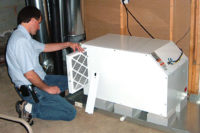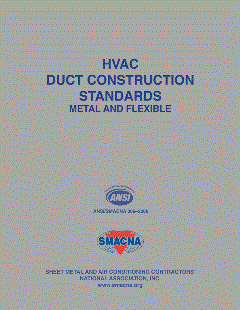Whenever we think of building codes as they relate to HVAC, we typically think of the dilution of volatile organic compounds (VOCs), as well as controlling mold growth through high-end fresh air ventilation with energy recovery ventilators (ERVs). But there’s a lot more to consider. Since we’re focusing this article on humidification and dehumidification, let’s start there.
While balanced ventilation does have energy benefits, there is a misconception about its ability to reduce humidity. In a hot, humid climate, an ERV is not removing enough moisture as it enters the home. If it was, it would a have a drain spud. ERVs handle a minimal amount of moisture (only what can be transferred in the cross stream). Air conditioners provide more, although they stop when temperature goals are met, which occurs before the latent load is controlled. Dehumidifiers are the only product specifically designed to mitigate moisture and reduce indoor RH.
There are myriad solutions to diluting stale and contaminated air as well as controlling mold growth well beyond a heat recovery ventilator that meet the following requirements:
- ASHRAE 62.2 – 2010
- Energy Star Certified Homes, Version 3
- EPA Indoor airPLUS, Version 1
- 2012 International Residential Code (IRC)
- 2012 International Energy Conservation Code (IECC)
- California Energy Commission Title 24
Recommended supply-side solutions can vary greatly by climate, including ventilation control that utilizes negative pressure to deliver fresh air , fresh air intake ventilation with guaranteed CFM delivery, ventilators with dehumidification which dehumidify fresh air before entering the building, and of course ERV, balancing ventilation with energy saving.
Proper application guidance can be found here, and here.
Important Code Considerations for Crawlspaces
The International Residential Code (IRC) for buildings is important because a lot of local code officials will adopt it when enforcing best practices. Recently, section 408.3 of the code was amended with the addition of section 2.4, which gives the guidelines for providing moisture control in an unvented crawl space. This is an important change because previously the code only relied on conditioned air from the HVAC system to control and dry a crawl space.
A Particular Word or Two on Particulate
While we focus on humidity control and ventilation, building requirements are also starting to consider healthy air as it relates to particulate control and high efficiency filtration. One example is Title 24 in California, which now requires MERV 13 or greater filtration for any new home building permits in 2020. This is especially challenging because in California, where all HVAC systems are attic installations, the code also requires access to the filter from the living space.
Keep Up to Stay Compliant
It is a herculean challenge to keep up with ever changing building requirements. The International Code Council (ICC)* publishes updates every three years. As reported in FineHomeBuilding, in 2019 alone there were just over 300 proposals for changes to the International Residential Code. While not all will be adopted, it illustrates the ever-changing environment in regulations each year. It’s essential for contractors to keep up and count on manufacturers who can help.
*The International Code Council (ICC) is comprised of the International Building Code (IBC), the International Residential Code (IRC), International Property Maintenance Code (IMPC), and the International Existing Building Code (IEBC).
Submit your own guest content here!










